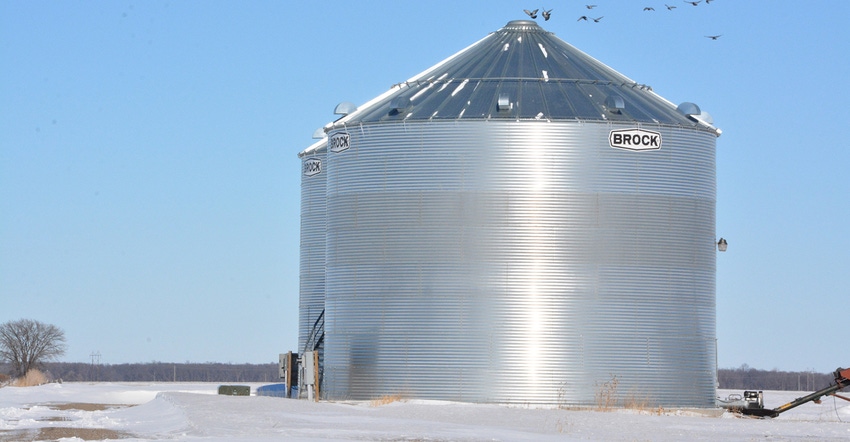September 20, 2018

North Dakota and South Dakota have long been part of the nation’s grain storage warehouse house for a good reason it’s cold here in the winter, and cold weather can increase the length of time you can store grain.
According to Ken Hellevang, North Dakota State University Extension ag engineer, the key to getting the most good out of living in a natural refrigerator is to cool dry stored grain to near the average outdoor temperature. It will stop insect activity and mold growth
Grain that has been dried to the proper storage moisture levels should be cooled to within about 20 degrees of the coldest average monthly temperature or below 40 degrees F for winter storage, he says.
North Dakota has an average January temperature of 7 degrees F, so grain should be cooled to about 20 to 30 degrees F.
It may take a while to get grain cool. To estimate the cooling time of 56 pounds-per-bushel grain, divide 15 by the airflow rate. For example, about 75 hours of fan time is required to cool the grain using an airflow rate of 0.2 cubic feet per minute per bushel.
Cooling times of other grain are the ratio of 56 pounds and the grain weight. For example, barley with a weight of 48 pounds per bushel will cool more quickly than corn at 56 pounds per bushel (48 divided by 56 equals 0.86).
Check stored grain biweekly until it has been cooled to the winter storage temperature, Hellevang advises.
Check and record the grain’s temperature and condition at several locations. Temperature history can be used to detect grain warming, which may indicate storage problems. Look for indications of problems, such as condensation on the roof or crusting of the grain surface. Probe to examine grain below the surface.
Temperature cables are an excellent tool to measure the grain temperature, Hellevang says, but they only measure the temperature of the grain next to the sensor. Grain is a very good insulator, so warm or hot grain just a few feet from the sensor may not be detected.
Because insects are dormant at colder temperatures, warm grain samples that you take to room temperature should be placed on a white cloth to inspect for insect infestations. Don’t use fumigants if you find insects. Fumigants will not control an insect infestation adequately if some of the grain is cold. The fumigant does not volatize in cool grain adequately, and insects in cool grain near the edge of a “hot spot” may have limited metabolic activity, which results in poor control. However, cooling the grain can control most storage problems.
Open or unlatch the grain bin’s fill or access cover when running the fan. An open access cover will serve as a pressure relief valve while the fan is running. Bin vents may become blocked by frost or ice if fans run when the outdoor air temperature is near or below freezing. The resulting air pressure may damage the bin roof.
Cover the aeration fan when it is not operating to prevent pests and moisture in the form of snow, fog and rain from entering the bin.
Source: NDSU Extension
You May Also Like




